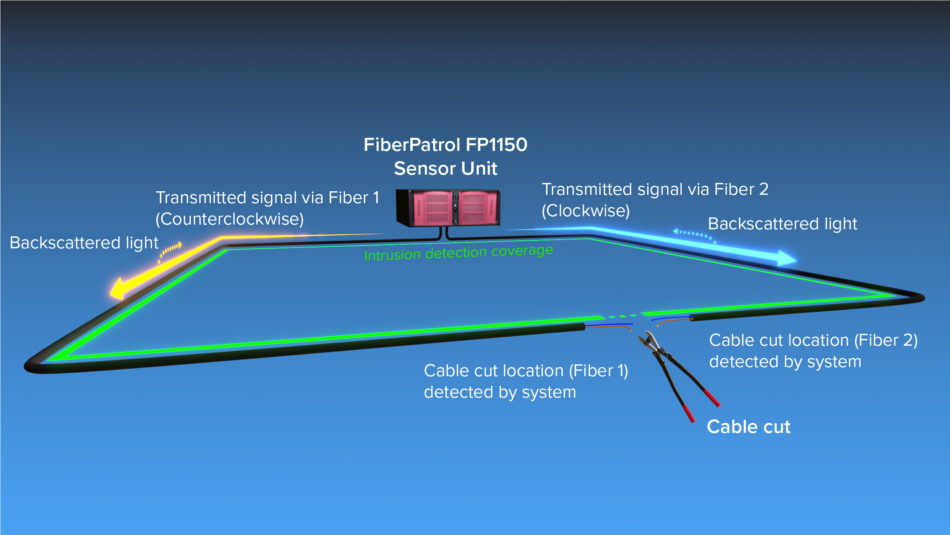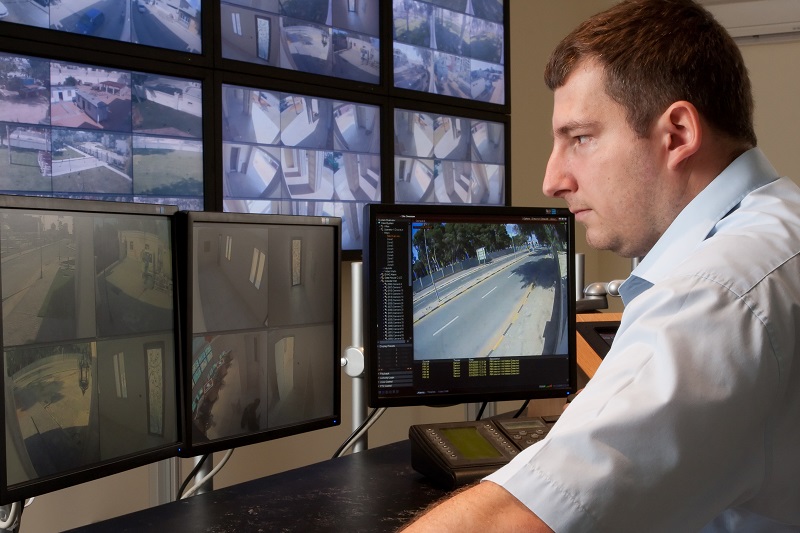The Ultimate Overview to Fiber Optic Safety And Security Systems for Your Company
In a period where protection issues are paramount for companies, understanding the ins and outs of fiber optic technology can be transformative. This overview outlines how integrating fiber optic security systems not only improves information protection yet additionally supplies advantages like resistance to disturbance and real-time monitoring capacities.
Recognizing Fiber Optic Technology

The core of a fiber optic cable is composed of a thin glass or plastic center, bordered by a cladding layer that mirrors light back right into the core. Single-mode fibers are created for long-distance transmission, while multi-mode fibers are ideal for much shorter distances, frequently utilized within structures.
Optical fiber are not just much faster yet also much more safe and secure than typical wiring. Their fundamental resistance to electromagnetic disturbance and the problem of using the signal without detection make them a favored selection for services focusing on information honesty and safety. As companies increasingly count on safe and secure and reliable interaction systems, comprehending fiber optic innovation ends up being important for notified decision-making.
Key Advantages of Fiber Optic Safety
When considering security choices for a service, the benefits of fiber optic systems are particularly engaging. Primarily, fiber optic technology offers extraordinary information transmission speeds and bandwidth ability, making it excellent for taking care of high-resolution video feeds from surveillance cameras. This capacity makes sure that security personnel get real-time data, boosting general feedback times to potential protection dangers.
Furthermore, fiber optic cords are naturally immune to electro-magnetic interference, which can jeopardize the integrity of typical copper-based systems. This resistance makes sure that the information sent stays safe and undisturbed, giving a more reputable safety and security facilities. Additionally, optical fiber are less prone to physical damage, as they are made from glass as opposed to steel, reducing maintenance prices and downtime.
Fiber optic systems use enhanced cybersecurity functions, consisting of file encryption capacities that shield delicate information from unapproved gain access to. Jointly, these advantages make fiber optic safety systems a durable selection for organizations looking for to boost their security measures.
Installation Process and Considerations
Thinking about the intricacies entailed, the installment process of fiber optic safety and security systems needs cautious preparation and execution. The first action entails a thorough website evaluation to determine optimal locations for cabling and equipment. This analysis must consider environmental factors, existing infrastructure, and prospective vulnerabilities.

In addition, the installment must adhere to neighborhood structure codes and market standards. This may include collaborating with different stakeholders such as building supervisors, IT groups, and protection workers to guarantee smooth integration with existing systems.
Post-installation, extensive testing is essential to link confirm system performance and identify any concerns that may arise. By focusing on these considerations during the installation procedure, companies can make certain a robust and reliable fiber optic protection system that satisfies their specific safety needs.
Most Current Technologies in Fiber Optic Safety And Security
Current developments in fiber optic modern technology have dramatically enhanced the capabilities of safety systems for businesses. Among one of the most notable advancements is the assimilation of fiber optic sensors that can discover vibrations and breaches along the perimeter of a facility. These sensing units supply real-time tracking, enabling fast action to potential breaches.
Furthermore, the growth of distributed fiber optic noticing innovation enables the continuous monitoring of large locations with a solitary fiber wire. This method not only lowers installation costs but also boosts the reliability of keeping an eye on systems by removing the need for multiple, separate sensing units.
In addition, advancements in multiplexing techniques have enabled organizations to send vast quantities of data over fiber optic networks, boosting the abilities of video clip monitoring systems. High-def video clip feeds can currently be sent over fars away without loss of top quality, making certain that security employees have accessibility to clear and actionable info.
Finally, the use of synthetic intelligence (AI) combined with fiber optic systems is reinventing click danger detection. AI algorithms can assess data from fiber optic networks to recognize uncommon patterns or actions, enabling proactive security steps. These advancements jointly stand for a substantial leap forward in fiber optic protection modern technology.
Selecting the Right System for Your Company
Selecting the appropriate fiber optic safety system for your company is essential for ensuring optimum defense and peace of mind. To make an enlightened option, evaluate your particular safety requirements, considering variables such as the size of your premises, the nature of your operations, and prospective susceptabilities.
Begin by examining the level of protection needed; for example, risky environments might necessitate advanced systems with incorporated security and intrusion discovery capabilities. Next off, take into consideration scalability; as your business grows, your protection system ought to can broadening to fit boosted needs without considerable overhauls.
In addition, check out the integrity and efficiency of numerous systems. Look for suppliers with established online reputations and customer testimonials that vouch for their service top quality. It's also recommended to ask about the innovation's compatibility with existing facilities, guaranteeing a smooth assimilation procedure.
Final Thought
Finally, fiber optic safety systems offer a robust solution for boosting organization protection frameworks. The combination of high-speed information transmission, resistance to electro-magnetic disturbance, and advanced monitoring capacities considerably improves total security (fiber optic security system). By comprehending the technology, recognizing its advantages, and thinking about the installation procedure, organizations can make informed choices. The most recent technologies additionally reinforce the effectiveness of these systems, making certain that organizations continue to be safe and adaptable in an ever-evolving hazard landscape.